What Does Paprika Taste Like? Unveiling This Spice’s Flavor
Paprika, a vibrant spice cherished in kitchens worldwide, carries more complexity than most people realize.
This seemingly simple red powder holds secrets that extend far beyond its colorful appearance.
Culinary enthusiasts often wonder about its nuanced flavor profile and potential impact on dishes.
Different varieties of paprika can transform ordinary meals into extraordinary culinary experiences.
Some types bring subtle warmth, while others deliver unexpected depth to recipes.
Passionate home cooks and professional chefs alike understand that paprika is not just a garnish but a powerful ingredient waiting to be understood.
Your next cooking adventure might just depend on unlocking the true essence of this remarkable spice.
Dive into the world of paprika and prepare to be surprised by its remarkable characteristics.
Key Facts to Know About Paprika
Paprika is a spice made by grinding up dried chili peppers. These peppers are part of the Capsicum annuum family, which includes types like aleppo, cayenne, and sweet peppers.
Paprika is known for its bright red-orange color, making it a popular choice to add both flavor and a splash of color to many dishes. In some languages, the word “paprika” can also mean the whole pepper or the plant itself, but in English, it usually just means the spice.
Paprika comes from the Americas, but explorers brought it to Europe, Asia, and Africa in the 1400s. Over time, Hungary became especially famous for making the best paprika.
Paprika’s Flavor Made Simple
Paprika isn’t just one kind of spice, there are three main types, each with its own flavor and amount of heat. Most paprika you find has a mild taste, and some even taste a little sweet.
It’s usually not as spicy as other pepper powders. But since paprika can be made from different kinds of peppers, its flavor can change from mild to spicy depending on the blend.
Sweet Paprika
Sweet paprika adds pretty color to many dishes. Cooks sprinkle it over salads and barbecue meals for extra flavor.
Paprika brings a gentle sweetness without strong spiciness. People use this spice to balance other tastes in their cooking.
Red bell peppers make up the main part of sweet paprika.
Smoked Paprika
Paprika from Spain starts with pimento peppers dried over oak wood fires. This spice offers three heat levels: mild, medium, and spicy.
Most paprika versions have subtle heat with slight sweetness. People can swap regular paprika for smoked paprika, but this change removes smoky notes from meals.
Spanish paprika makers sometimes dry peppers in sunlight or kilns instead of smoking. Official European Union rules state true Spanish paprika must follow traditional production methods and come directly from Spain.
Hot Paprika
Hot paprika shares similarities with Hungarian paprika. Makers create it using more intense pepper types like red chili peppers.
Seeds are part of hot paprika, which makes its taste sharper.
Flavor profiles seem less complex compared to other paprika styles.
You sense only its heat level, which moves from gentle to seriously mouth-scorching. Even so, its spiciness remains lower than numerous other pepper varieties on heat measurement scales.
Cooking With Paprika Made Easy
Paprika is a versatile spice that brings out the best in other ingredients. It’s especially popular in Latin American cooking and shows up in dishes like salsas, sauces, and tasty fillings.
Paprika is perfect for giving meat dishes, like chicken, beef, or pork, a warm, rich flavor. It’s often used to season sausage, ham, barbecue, and even potato salads.
The bright red color also makes it a great finishing touch for deviled eggs and creamy sauces. Sometimes, peppers are roasted before being made into paprika powder, giving the spice a smokier taste.
Just be careful not to use too much, or it might overpower your dish. For an extra boost, try frying paprika with oil.
This brings out its spicy notes and helps your body soak up more antioxidants. Many cooks love to mix paprika with oil and meat to create even deeper flavors.
Paprika is loved in recipes from all over the world, including Africa, Asia, and Europe. One of the most famous dishes featuring paprika is Hungarian goulash.
How Heat Treatment Changes Paprika Flavor
When paprika is heated, its flavor changes in noticeable ways.
Cooking with heat makes paprika taste sweeter, deeper, and sometimes a bit smoky.
If you fry or toast paprika, it can become richer and more fragrant, but be careful not to burn it, or it might turn bitter.
Adding paprika to hot oil at the start of cooking helps spread its taste through the whole dish.
Overall, heat treatment brings out more layers of flavor in paprika and can make recipes taste warmer and more inviting.
What’s Inside Paprika Nutritionally
Paprika isn’t just tasty, it’s packed with good-for-you nutrients! This spice gives you a mix of protein, fiber, iron, and healthy carbs.
It’s also a great source of important vitamins like A, B6, K, and E. Paprika contains natural compounds like capsanthin, beta-carotene, lutein, and zeaxanthin.
These help protect your body from damage caused by stress and may even lower your risk of certain cancers. The capsaicin in paprika can also help keep your cholesterol levels healthy and may stop the growth of harmful cells.
Plus, the nutrients in paprika are good for your eyes and can help prevent vision problems as you age. Paprika’s anti-inflammatory properties might ease joint pain, help with digestion, and support nerve health.
With so many benefits, it’s easy to see why paprika is considered one of the healthiest spices out there!
How Long Will Paprika Last?
Before you buy paprika, always check the expiration date on the package to make sure it’s still good. Once you have it at home, remember that moisture is paprika’s biggest enemy because it can cause mold.
If you ever see mold, throw the paprika away right away. Other signs that paprika has gone bad include clumps, bugs, or a faded smell and taste.
If your paprika doesn’t have its usual color, aroma, or flavor, it’s time for a new jar. To keep paprika fresh for as long as possible, store it in a cool, dry place, like a cupboard or pantry.
Keeping it in the fridge works even better. Make sure the lid is closed tightly to keep out air and moisture.
When stored the right way, dried or powdered paprika can last up to three years. After that, it may start to lose its quality, even if it still looks okay.
Home Growing Tips for Paprika
Growing paprika takes some patience, but the reward is worth it. There’s nothing quite like enjoying something you grew yourself!
If you’d like to try planting paprika at home, here are a few simple steps to help you get started:
Step 1: Make The Right Space
Paprika plants grow best when days warm up to 70F (21C) and nights stay around 65F (18C). Spring frost will harm these delicate plants, so start seeds 8 to 10 weeks before warm weather arrives.
Seeds need good compost-filled pots with planting depth around 14-inch. Sunlight works perfectly for these seeds.
Windows offering temperatures near 80F (26C) create perfect growing conditions. Keeping soil moist matters most during early stages.
Seedlings peek through soil within 7 to 10 days after careful planting.
Step 2: Plant The Seeds
Paprika plants thrive when soil reaches 65F (18C), so move them to a sunny spot with good drainage and rich nutrients. Black plastic mulch helps warm soil before planting.
Space paprika plants 12 inches apart in rows measuring 3 feet. Boldog paprika varieties might need 18 inches between plants.
Water plays a key role in growing healthy peppers. Provide 1 inch of water weekly during dry periods.
Water directly at plant bases to keep leaves dry.
Soil should stay moist in top layers.
Mulch helps retain moisture and reduces weeding chores.
Step 3: Pick The Paprika
Peppers show they are ready when they stretch out and turn deep red. Cut pepper stems carefully with pruning scissors to remove ripe ones.
People should not twist or pull peppers since this damages their delicate skin.
Make Your Own Paprika at Home
You can find paprika powder in most grocery stores these days. But if you’re concerned about freshness or just want to try making it yourself, it’s easy to do at home!
Follow these simple steps to create your own homemade paprika powder:
Step 1: Dry The Peppers
Wear gloves when slicing peppers to shield your hands from irritation. Cut off green tops, remove seeds, and slice white ribs away.
Slice peppers into thin strips to help them dry faster.
Sun-drying works well for peppers.
Hang fresh peppers on a string outside where sunlight can reach them completely.
Peppers also dry nicely when spread out on a single layer of dish.
Flip them regularly to prevent spoiling and prepare them for grinding into spice.
Dehydrators and ovens speed up pepper drying significantly.
Place peppers in dehydrator and set temperature to 130F (54C). Drying typically takes between 4 to 12 hours.
Warning: Most convection ovens struggle to maintain low temperatures needed for pepper drying without accidentally baking them. Proceed with caution when using this method.
Step 2: Grind The Peppers
Grinding paprika requires care to keep its fresh taste. Small batches work best with a pestle and mortar.
Spice grinders also provide good results.
People sometimes use coffee grinders as an alternative.
This approach brings risks. Coffee grinder walls hold pepper bits that could mix into future coffee flavors.
Seed removal matters before grinding. Clean seeds help create smooth, even powder.
Step 3: Smoke If Needed
Smoked paprika brings extra taste to regular paprika powder. Pepper smoking happens before the drying process.
Peppers go into smokers with oak chips at low temperatures near 150F (65C) for three hours. Smokers complete their work, and then people can finish drying peppers in dehydrators.
Simple steps help anyone make paprika powder quickly and easily.
Great Dishes With Paprika to Try
Paprika is a wonderful spice that works well in all kinds of dishes from around the world. Try these easy recipes to add great flavor to your meals and impress your family and friends:
Paprika Chicken Skewers
Chicken skewers spice up dinner plans quickly. Cooking takes just 10 minutes for maximum flavor.
People love these skewers at outdoor parties and small gatherings. Spicy and smoky tastes make everyone happy and excited to eat!
Chicken Paprikash
Chicken recipes with paprika offer a delicious way to enjoy hearty meals. Boneless chicken thighs work best for this Hungarian-style dish.
Chicken pieces mixed with creamy sauce bring out rich flavors from sweet paprika. Sour cream and onions complete this classic comfort meal.
Each bite delivers warm, smooth tastes that make dinner special.
Garlic Shrimp With Smoked Paprika
Shrimp makes dinner special with this easy recipe packed with flavor. Cooking takes just minutes for a mouth-watering meal.
Olive oil helps sear the shrimp perfectly. Garlic, honey, and smoked paprika blend together to create a delicious coating.
Saucy and quick, this shrimp recipe wins every time on the dinner table.
Paprika Taste and Extra Insights
1. What are the best foods to use paprika with?
Paprika adds a boost to all kinds of dishes. It’s great sprinkled on eggs, mixed into soups and stews, or added to meats like chicken, beef, or fish. You can also use it to brighten up roasted vegetables and potato dishes.
2. Which spices can I use if I run out of paprika?
If you don’t have paprika, try using mild chili powder, chipotle powder, or smoked paprika. Cayenne pepper works too, but it’s spicier, so use only a little.
3. Why does my paprika seem bland or have no flavor?
Paprika can lose its strength if it’s old or if it’s been kept somewhere hot or damp. To keep its flavor, store it in a cool, dry place and close the lid tightly after each use.
4. Is paprika safe for pregnant women?
Most pregnant women can enjoy paprika without a problem. But if you notice any tummy trouble or discomfort, it’s best to use a small amount or avoid it for a while.
5. Who should avoid adding paprika to their food?
Anyone with a sensitive stomach, capsaicin allergy, or trouble with spicy foods should avoid paprika. If you’re allergic to spicy seasonings, it’s best to skip it.
6. Does paprika go bad?
Yes, paprika can go stale over time. Check for changes in color or smell, and replace it if it doesn’t seem fresh anymore.
7. Are there health benefits to using paprika?
Paprika has vitamins and antioxidants that can be good for you. It may support your immune system and help reduce swelling.
8. How much paprika should I add to recipes?
Start with a small amount, about half a teaspoon, and add more if you want a stronger flavor or brighter color.
Let’s Dive Into Paprika Fun
Paprika is a must-have spice for every kitchen. Not only is it good for your health, but it also brings delicious flavor to your food.
Just a small sprinkle of paprika, like half a teaspoon, can take your BBQ pork or other dishes to the next level. It’s a simple way to make your meals more exciting.
I hope you found this guide helpful! If you enjoyed it, please share or like it.
And if you have any questions about paprika, feel free to ask in the comments below. I’m always happy to help!

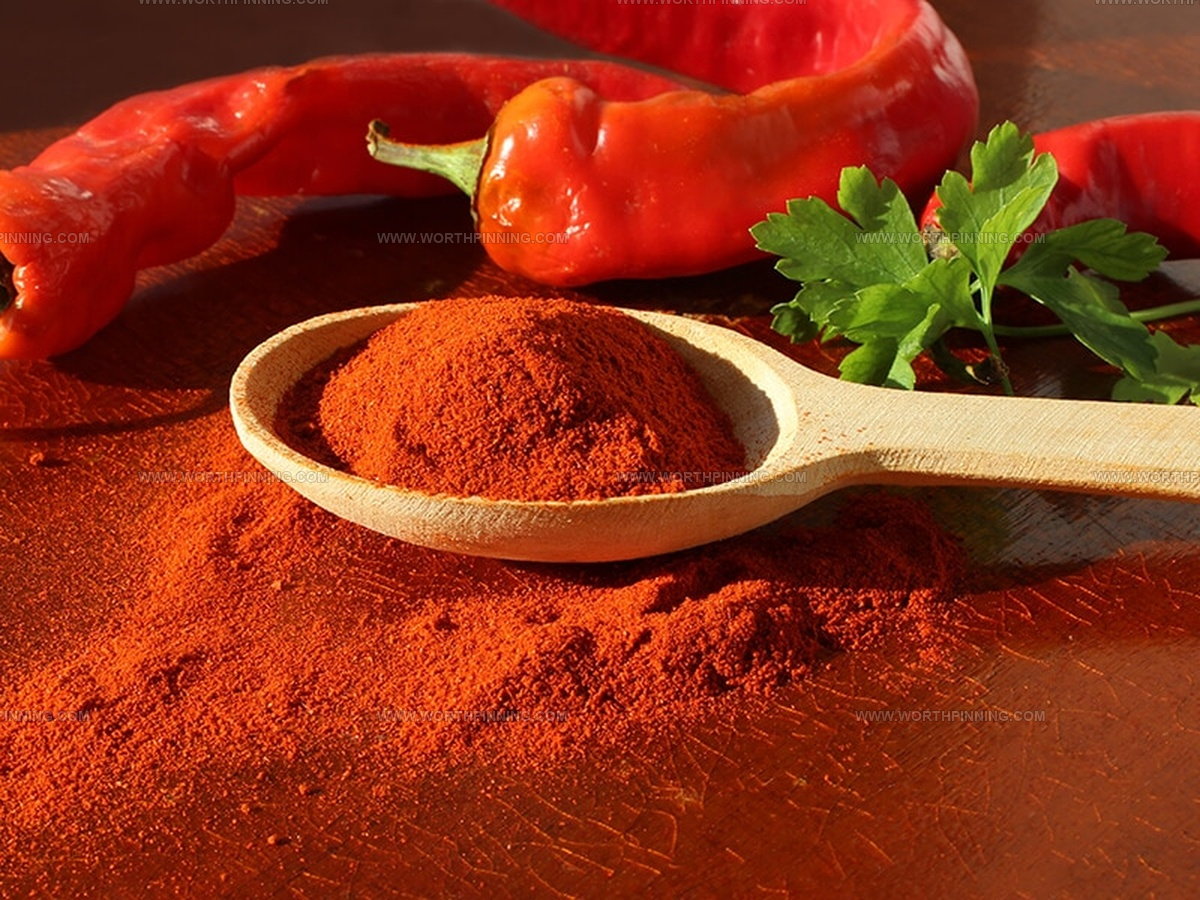
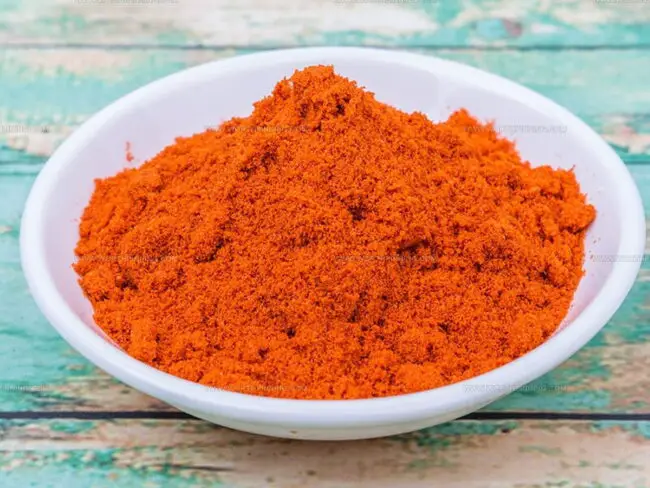
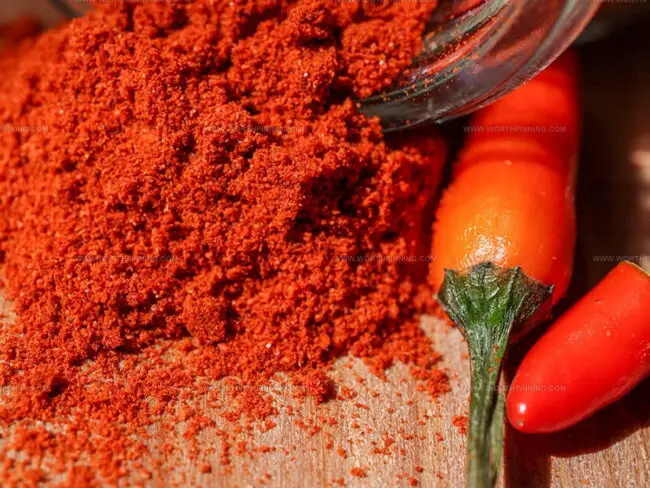
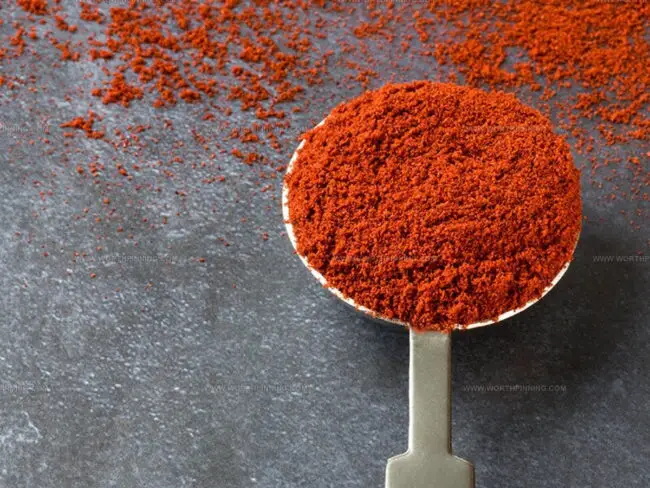
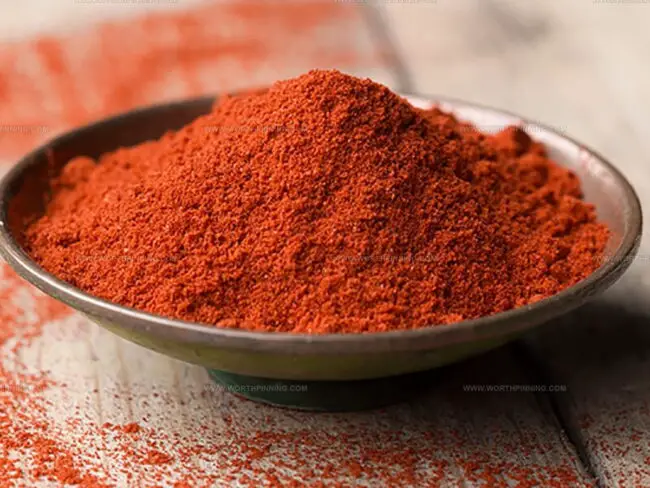


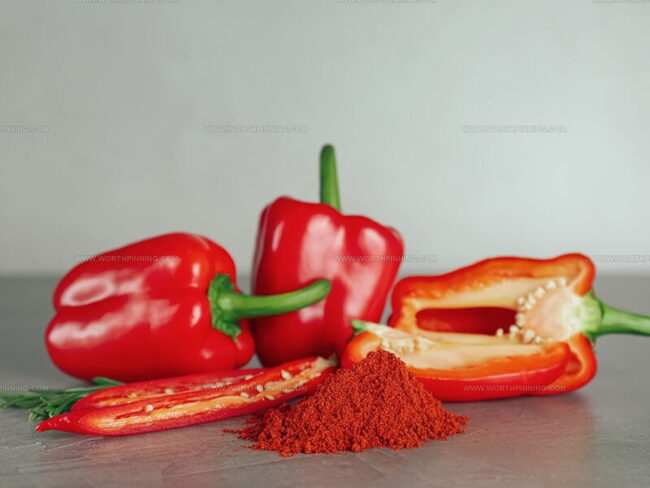
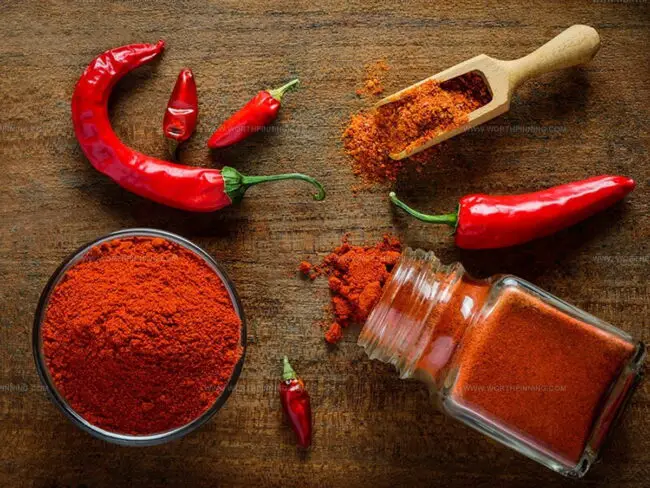
Sophia Rivera
Recipe Developer & Kitchen Tips Specialist
Expertise
Education
Austin Community College
San Antonio Culinary Institute
Sophia’s passion for baking began in her family kitchen, where she spent hours experimenting with new recipes. With a background in baking and pastry arts, she loves making desserts that are as visually stunning as they are delicious.
Sophia is all about using seasonal, locally sourced ingredients to create treats that everyone will enjoy. When she’s not creating mouth-watering desserts, you can find her gardening, making new recipes, or enjoying a relaxing afternoon with her family.